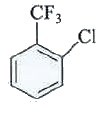Which of the following will give unsymmetrical di-substituted urea after reaction with CH3NH2?
COCI2
CH3CH2NCS
CH3CH2NCO
All of these
The correct Answer is:C
To determine which of the given options will yield an unsymmetrical di-substituted urea after reacting with methylamine (CH₃NH₂), we can follow these steps:
Step 1: Understand the Structure of Urea
Urea has the general structure R₂NCONR₂, where R can be any alkyl or aryl group. Di-substituted urea means that there are two different substituents on the nitrogen atoms.
Step 2: Analyze the Reaction with Methylamine
When methylamine (CH₃NH₂) reacts with a carbonyl compound (like an aldehyde or ketone), it forms an intermediate that can lead to the formation of urea. The key here is to ensure that the resulting urea has different substituents on either side of the nitrogen.
Step 3: Evaluate Each Option
Let’s consider the possible options (A, B, C, D) that might be provided in the question. We will analyze them based on their ability to produce unsymmetrical di-substituted urea.
- Option A: If this option is a simple carbonyl compound with two identical groups, it will yield a symmetrical urea.
- Option B: If this option has two different groups attached to the carbonyl, it will yield an unsymmetrical di-substituted urea.
- Option C: As described in the video, if this option has a carbonyl compound with one methyl group and one ethyl group, it will also yield an unsymmetrical di-substituted urea.
- Option D: Similar to option A, if this option is symmetrical, it will not yield an unsymmetrical product.
Step 4: Identify the Correct Option
From the analysis, we can conclude that:
- If an option has two different substituents (like methyl and ethyl), it will yield an unsymmetrical di-substituted urea.
- The correct answer is Option C, which produces an unsymmetrical di-substituted urea.
Final Answer
The option that will give an unsymmetrical di-substituted urea after reaction with CH₃NH₂ is Option C.
---
Urea has the general structure R₂NCONR₂, where R can be any alkyl or aryl group. Di-substituted urea means that there are two different substituents on the nitrogen atoms.
When methylamine (CH₃NH₂) reacts with a carbonyl compound (like an aldehyde or ketone), it forms an intermediate that can lead to the formation of urea. The key here is to ensure that the resulting urea has different substituents on either side of the nitrogen.
Let’s consider the possible options (A, B, C, D) that might be provided in the question. We will analyze them based on their ability to produce unsymmetrical di-substituted urea.
- Option B: If this option has two different groups attached to the carbonyl, it will yield an unsymmetrical di-substituted urea.
- Option C: As described in the video, if this option has a carbonyl compound with one methyl group and one ethyl group, it will also yield an unsymmetrical di-substituted urea.
- Option D: Similar to option A, if this option is symmetrical, it will not yield an unsymmetrical product.
From the analysis, we can conclude that:
- If an option has two different substituents (like methyl and ethyl), it will yield an unsymmetrical di-substituted urea.
- The correct answer is Option C, which produces an unsymmetrical di-substituted urea.
The option that will give an unsymmetrical di-substituted urea after reaction with CH₃NH₂ is Option C.
Similar Questions
Knowledge Check
Which of the following reactions will give least substituted alkene?
A B
B C
C D
D
Which of the compounds give cine substitution products on reaction with NaNH2 an liquid NH3 ?
A B
B C
C D
D
Which of the following compounds will give racemic mixture on nucleophilic substitution by OH− ion?
(I)CH3−CH∣C2H5−Br
(II) CH3−Br∣C∣C2H5−CH3
A(I)B(II)C(I),(II)DNone
Outline the preparation of the following compounds using a nucleophilic substitution reaction : CH3C≡CCH2CH3
View SolutionOutline the preparation of the following compounds using a nucleophilic substitution reaction : CH3CH2CH2CN
View SolutionOutline the preparation of the following compounds using a nucleophilic substitution reaction : CH3OC(CH3)3
View SolutionOutline the preparation of the following compounds using a nucleophilic substitution reaction : CH3CH2CH2CH2NO2.
View SolutionOutline the preparation of the following compounds using a nucleophilic substitution reaction : CH3CH2−O−N=O
View Solution

